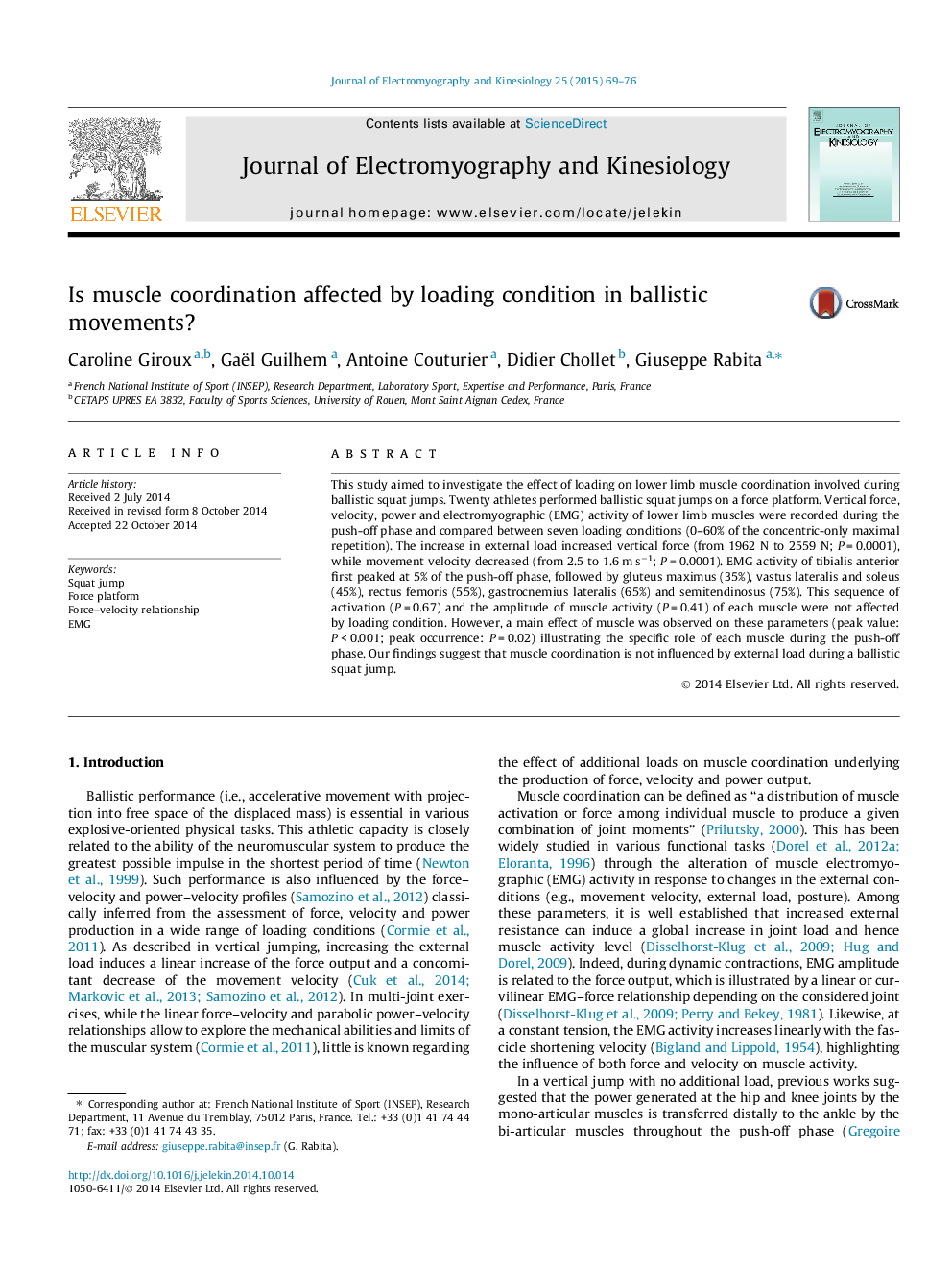| Article ID | Journal | Published Year | Pages | File Type |
|---|---|---|---|---|
| 6210356 | Journal of Electromyography and Kinesiology | 2015 | 8 Pages |
This study aimed to investigate the effect of loading on lower limb muscle coordination involved during ballistic squat jumps. Twenty athletes performed ballistic squat jumps on a force platform. Vertical force, velocity, power and electromyographic (EMG) activity of lower limb muscles were recorded during the push-off phase and compared between seven loading conditions (0-60% of the concentric-only maximal repetition). The increase in external load increased vertical force (from 1962 N to 2559 N; P = 0.0001), while movement velocity decreased (from 2.5 to 1.6 m sâ1; P = 0.0001). EMG activity of tibialis anterior first peaked at 5% of the push-off phase, followed by gluteus maximus (35%), vastus lateralis and soleus (45%), rectus femoris (55%), gastrocnemius lateralis (65%) and semitendinosus (75%). This sequence of activation (P = 0.67) and the amplitude of muscle activity (P = 0.41) of each muscle were not affected by loading condition. However, a main effect of muscle was observed on these parameters (peak value: P < 0.001; peak occurrence: P = 0.02) illustrating the specific role of each muscle during the push-off phase. Our findings suggest that muscle coordination is not influenced by external load during a ballistic squat jump.
